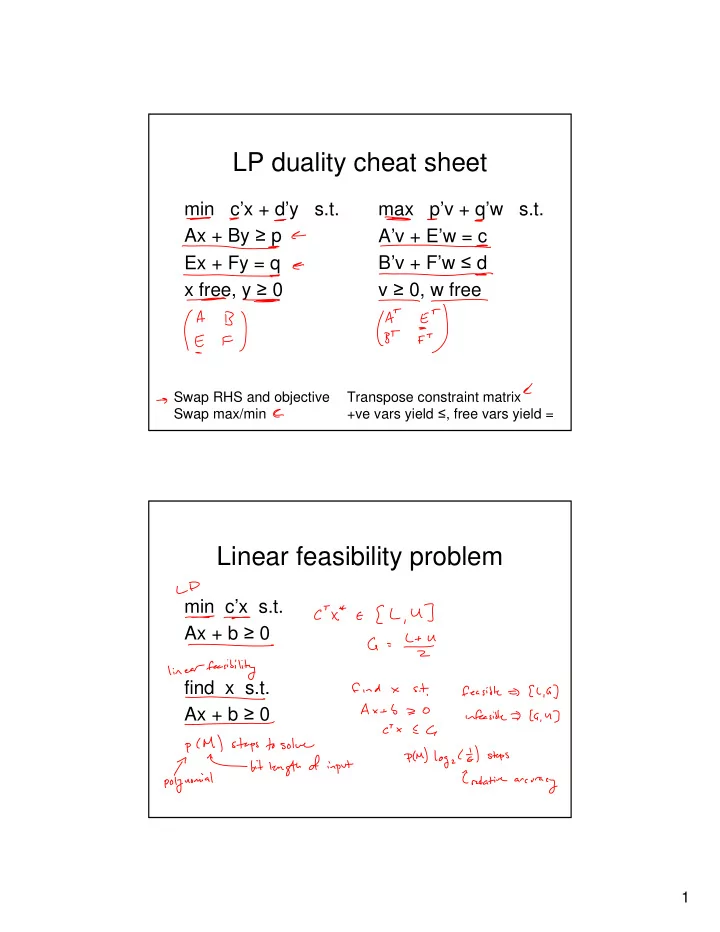

LP duality cheat sheet min c’x + d’y s.t. max p’v + q’w s.t. Ax + By ≥ p A’v + E’w = c B’v + F’w ≤ d Ex + Fy = q x free, y ≥ 0 v ≥ 0, w free Swap RHS and objective Transpose constraint matrix +ve vars yield ≤ , free vars yield = Swap max/min Linear feasibility problem min c’x s.t. Ax + b ≥ 0 find x s.t. Ax + b ≥ 0 1
Separation oracle Ellipsoid preview 2
Difficulties • How do we get bounding sphere? • How do we know when to stop? • Bound region gets complicated–how do we find its center? Bounding a partial ellipsoid • General ellipsoid w/ center x C , radius R: • Halfspace: p T x + q ≤ 0 • Translate to origin, scale to be spherical y = x = 3
Bounding a partial sphere • Rotate so hyperplane is axis-normal • New center x c : • New shape A: For example 4
Ellipsoid algorithm • Want to find x s.t. Ax+b+ η ≥ 0 • Pick R s.t. ||x*|| ≤ R • E 0 := { x | ||x|| ≤ R } • Repeat: – x t := center of E t – ask whether Ax t + b ≥ 0 • yes: declare feasible! • no: get separating hyperplane – E t+1 := bound(E t ∩ { x | p tT x ≤ p tT x t }) – if vol(E t+1 ) ≤ ε vol(E 0 ): declare infeasible! Getting bounds • How big do L, U need to be? • How big does R need to be? • What should η be? • How small does ε need to be? 5
Other algorithms • Ellipsoid is polynomial, but slow • Some other algorithms: – simplex: exponential in worst case, but often fast in practice – randomized simplex: polynomial [Kelner & Spielman, 2006] – interior point: polynomial – subgradient descent: weakly polynomial, but really simple, and fast for some purposes What’s a subgradient? 6
Subgradient descent for SVMs • min s,w,b ||w|| 2 + C ∑ i s i s.t. T w – b) ≥ 1 – s i y i (x i s i ≥ 0 • Equivalently, Subgradient in SVM • min w L(w) = ||w||^2 + C ∑ i h(y i x i T w) • Subgradient of h(z): • Subgradient of L(w) wrt w: 7
Recommend
More recommend